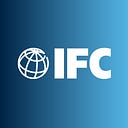The Ethiopia Commodity Exchange Connects Farmers and Buyers — and Boosts Economic Growth
By Abenet Bekele and Ofeoritse Daibo
Commodity exchanges are critical components of efficient, modern agriculture sectors.
Yet prior to 2008 Ethiopia lacked such an exchange and its agriculture commodity market was highly fragmented and suffered from elevated transaction costs, contract defaults, a lack of quality standards, and an unreliable supply of commodities. Weak infrastructure in terms of electricity, roads, telecommunications, financial services, and warehouses were problematic to the country’s commodity markets, as was a lack of necessary market infrastructures, including reliable and timely market information, efficient clearing houses, commodity standards, and reliable ways to connect buyers and sellers.
The Ethiopia Commodity Exchange was established in 2008 to help overhaul Ethiopia’s agriculture sector and create a dynamic, forward-looking, efficient market system for the country’s agriculture output. The latest EM Compass note takes a closer look at this first modern commodity exchange in Sub-Saharan Africa (outside of South Africa) — one that now connects 3.5 million Ethiopian smallholder farmers to markets and is supported by modern supply-chain infrastructure.
Ethiopia’s commodity exchange was designed to function as a one-stop shop for commodity warehousing, quality control, trading, clearing and settlement, and market data dissemination. However, the model was modified recently and replaced in 2016 by a system that placed warehousing and quality control operations, as well as the central depository functions, under the Ethiopian Agricultural Commodities Warehousing Service Enterprise, a separate business entity.
In the eight years since its inception the commodity exchange has evolved to handle larger trade volumes, reaching a capacity of 715,000 metric tons of commodities, and has rapidly adopted technologies used by more established exchanges. In 2013 it initiated a traceability project for commodity exports that captures data on quality, health, and safety standards and tracks the movement of commodities along the supply chain from the processing unit to the shelf. And in 2015 the exchange transitioned from an open outcry system to an electronic trading system to boost trade speeds and efficiency.
In the first half of 2017 alone the exchange traded contracts of coffee, sesame, white pea beans, green mung beans, red kidney beans, wheat and maize, valued at about 10 billion birr, or about $440 million.
Agriculture continues to be a driving force for economic growth in Ethiopia, making up about 41 percent of GDP in 2015. While this share is almost unchanged from 2004, the country has enjoyed a remarkable growth spurt over the last decade, averaging nearly 11 percent annual GDP growth from 2004 to 2015, one of the fastest rates among emerging market economies globally and twice the regional average growth rate. The establishment of the Ethiopia Commodity Exchange is an important component within the overall development of this large country of 100 million people.
Abenet Bekele, Chief Strategy Officer, Ethiopia Commodity Exchange, Addis Ababa, Ethiopia, and currently Research Assistant at Thought Leadership, Economics and Private Sector Development, IFC, via the Milken Institute Capital Markets Program (ahaile@ifc.org)
Ofeoritse Daibo, Editor and Writer, IFC (odaibo@ifc.org)
About the authors of the EM Compass Note:
Abenet Bekele Haile, Chief Strategy Officer, Ethiopia Commodity Exchange, Addis Ababa, Ethiopia, and currently Research Assistant at Thought Leadership, Economics and Private Sector Development, IFC via the Milken Institute Capital Markets Program (ahaile@ifc.org)
Ariane Volk, Research Assistant, Thought Leadership, Economics and Private Sector Development, IFC (avolk@ifc.org)
Thomas Rehermann, Senior Economist, Thought Leadership, Economics and Private Sector Development, IFC
(trehermann@ifc.org)
